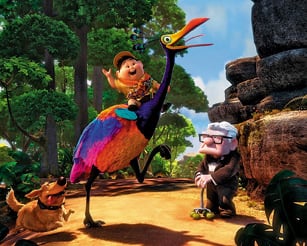IN 1914, when legendary filmmaker Max Fleischer animated ‘Popeye The Sailor’ and ‘Betty the Boop’ on the silver screen, he never realised that his name would be permanently etched in history. But it was not so much about the movies, but the technique “Rotoscope” he invented that made him a legend. Ever since, the device ‘Rotoscope’ invented by Fleischer changed the way animation movies were made.
What is Rotoscope?
A ‘Rotoscope’ is an animation stand or associated projector that is used to project a sequence of action frames against a surface so that a set of animation frames could be traced or created. In other words it is a technique in which live action video is traced to create animation that mimics the live action.

The action is traced just to get the lines needed to capture the image, attempting to keep consistent linework from frame to frame while following the live action video’s motion. In simple terms, it is the process of tracing a live-action sequence frame by frame.
The analogy of clipping path is similar for rotoscoping. You trace an object out to remove it from the scene or to apply effects exclusively within the created matte or mask. Rotoscoping is clearly like clipping path, only it is for videos and ten times the workload. Due to the fluid motion of live-action frames, rotoscope technology brought the illusion of even greater fluidity with the animation.
When it was first used, live-action film images were projected on to a glass panel that was frosted where they would be redrawn by an animator. Today, Rotoscoping refers to manually creating a matte for a visual element on a live-action plate in order to composite it onto another background for use in film or a movie.
|
Career as rotoscoper
Digital rotoscope artist is responsible for creating extremely detailed digital mattes using 2D image processing and drawing tools. These mattes are used for wire removals, rig removals, background fixes, and blue screen extractions. These are high-demand jobs with year-round employment opportunities.
Many production houses and creative boutiques require Rotoscopy artistes for specific projects. Motion graphics artistes too are required to do a certain amount of Rotoscopy work for creating dynamic graphics.
There are a host of film studios such as Prime Focus, Reliance Media Works, Eyeqube, Prana Studios, Tata Elxsi Studios, EFX Prasad Labs, MPC, Technicolor Paprikas, Rhythm n Hues who constantly look for Rotoscopers. For supervisors who have a good body of work there are opportunities in countries like the USA, UK, Canada, Japan, Australia etc. The training institutes help the candidates in their placements.
Remuneration
After finishing the in-house training in some leading animation production studio, a junior rotoscoper can start earning between Rs. 7,500 to Rs. 12,000. A senior rotoscoper (Roto Team lead) with an experience of 3 to 5 years can take home a sum of Rs.12,000 to Rs. 20,000, while Roto Supervisors earn anywhere between Rs. 20,000 to Rs. 40,000 and Roto supervisor (all projects) with more than five year experience can expect a salary of Rs. 45,000 to Rs 1 lakh and upwards.
Like all the other animation specialists, a rotoscoper should have an eye for detail, patience, aptitude, fair understanding of camera angles and movements. On the software skills front, the rotoscoper should have adequate knowledge of Adobe Photoshop, Adobe After effects, Eyeon Fusion, Foundry Nuke, Silhouette, Mocha V2.0/Mocha Pro. The minimum qualification to pursue a course in rotoscope is 10+2.
Naveen Gupta is CEO, Frameboxx animation and Visual effects.
Know more about the prospects in the animation industry here...